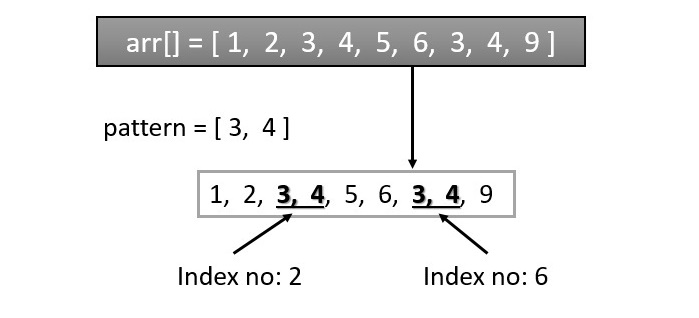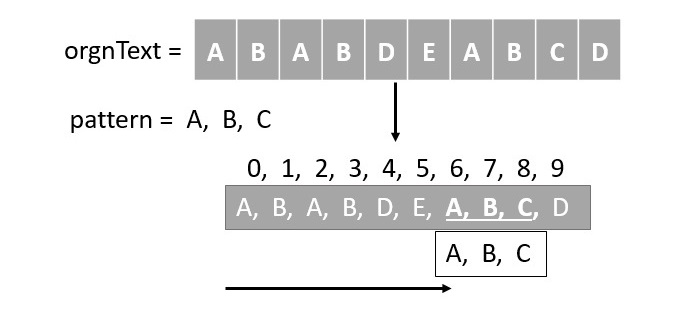
- 資料結構與演算法
- DSA - 首頁
- DSA - 概述
- DSA - 環境設定
- DSA - 演算法基礎
- DSA - 漸進分析
- 資料結構
- DSA - 資料結構基礎
- DSA - 資料結構和型別
- DSA - 陣列資料結構
- 連結串列
- DSA - 連結串列資料結構
- DSA - 雙向連結串列資料結構
- DSA - 迴圈連結串列資料結構
- 棧與佇列
- DSA - 棧資料結構
- DSA - 表示式解析
- DSA - 佇列資料結構
- 搜尋演算法
- DSA - 搜尋演算法
- DSA - 線性搜尋演算法
- DSA - 二分搜尋演算法
- DSA - 插值搜尋
- DSA - 跳躍搜尋演算法
- DSA - 指數搜尋
- DSA - 斐波那契搜尋
- DSA - 子列表搜尋
- DSA - 雜湊表
- 排序演算法
- DSA - 排序演算法
- DSA - 氣泡排序演算法
- DSA - 插入排序演算法
- DSA - 選擇排序演算法
- DSA - 歸併排序演算法
- DSA - 希爾排序演算法
- DSA - 堆排序
- DSA - 桶排序演算法
- DSA - 計數排序演算法
- DSA - 基數排序演算法
- DSA - 快速排序演算法
- 圖資料結構
- DSA - 圖資料結構
- DSA - 深度優先遍歷
- DSA - 廣度優先遍歷
- DSA - 生成樹
- 樹資料結構
- DSA - 樹資料結構
- DSA - 樹的遍歷
- DSA - 二叉搜尋樹
- DSA - AVL樹
- DSA - 紅黑樹
- DSA - B樹
- DSA - B+樹
- DSA - 伸展樹
- DSA - 字典樹
- DSA - 堆資料結構
- 遞迴
- DSA - 遞迴演算法
- DSA - 使用遞迴實現漢諾塔
- DSA - 使用遞迴實現斐波那契數列
- 分治法
- DSA - 分治法
- DSA - 最大最小問題
- DSA - Strassen矩陣乘法
- DSA - Karatsuba演算法
- 貪心演算法
- DSA - 貪心演算法
- DSA - 旅行商問題(貪心法)
- DSA - Prim最小生成樹
- DSA - Kruskal最小生成樹
- DSA - Dijkstra最短路徑演算法
- DSA - 地圖著色演算法
- DSA - 分數揹包問題
- DSA - 帶截止日期的作業排序
- DSA - 最優合併模式演算法
- 動態規劃
- DSA - 動態規劃
- DSA - 矩陣鏈乘法
- DSA - Floyd Warshall演算法
- DSA - 0-1揹包問題
- DSA - 最長公共子序列演算法
- DSA - 旅行商問題(動態規劃法)
- 近似演算法
- DSA - 近似演算法
- DSA - 頂點覆蓋演算法
- DSA - 集合覆蓋問題
- DSA - 旅行商問題(近似演算法)
- 隨機演算法
- DSA - 隨機演算法
- DSA - 隨機快速排序演算法
- DSA - Karger最小割演算法
- DSA - Fisher-Yates洗牌演算法
- DSA有用資源
- DSA - 問答
- DSA - 快速指南
- DSA - 有用資源
- DSA - 討論
DSA - 模式搜尋
什麼是模式搜尋?
模式搜尋/匹配演算法是一種用於在給定文字中定位或查詢特定模式或子字串的技術。其基本思想是在指定的資料結構中查詢特定模式的所有出現情況。例如,給定一個數字陣列[1, 2, 3, 4, 5, 6, 3, 4, 9],我們需要在陣列中查詢模式[3, 4]的所有出現情況。答案將是索引號2和6。

模式搜尋演算法如何工作?
有多種模式搜尋演算法以不同的方式工作。設計這些型別演算法的主要目標是降低時間複雜度。對於較長的文字,傳統方法可能需要大量時間才能完成模式搜尋任務。
如果我們說傳統方法,我們實際上是指蠻力法來解決模式搜尋問題。讓我們看看它是如何工作的 -
將模式滑過文字。
逐個比較每個字元。
如果所有字元都匹配,則表示找到匹配項。
如果不是,則將模式向右移動一個位置,並重復此過程,直到到達文字末尾或找到匹配項。

請記住,蠻力法是解決字串匹配或搜尋的最簡單方法,但它也是最慢、效率最低的方法。該演算法的時間複雜度為O(nm),其中'n'是文字的長度,'m'是模式的長度。這意味著在最壞情況下,我們必須將文字的每個字元與模式的每個字元進行比較,如果n和m很大,這可能會非常慢。下一節中還提到了其他演算法。
示例
在本例中,我們將實際演示蠻力法在各種程式語言中解決模式匹配問題。
#include <stdio.h>
#include <string.h>
// method to find match
void findMatch(char *orgText, char *pattern) {
int n = strlen(orgText);
int m = strlen(pattern);
// comparing the text and pattern one by one
for (int i = 0; i <= n-m; i++) {
int j = 0;
while (j < m && orgText[i+j] == pattern[j]) {
j++;
}
// print result if found
if (j == m) {
printf("Oohhoo! Match found at index: %d\n", i);
return;
}
}
// if not found
printf("Oopps! No match found\n");
}
int main() {
// Original Text
char orgText[] = "Tutorials Point";
// pattern to be matched
char pattern[] = "Point";
// method calling
findMatch(orgText, pattern);
return 0;
}
#include <iostream>
#include <string>
using namespace std;
// method to find match
void findMatch(string orgText, string pattern) {
int n = orgText.length();
int m = pattern.length();
// comparing the text and pattern one by one
for (int i = 0; i <= n-m; i++) {
int j = 0;
while (j < m && orgText[i+j] == pattern[j]) {
j++;
}
// print result if found
if (j == m) {
cout << "Oohhoo! Match found at index: " << i << endl;
return;
}
}
// if not found
cout << "Oopps! No match found" << endl;
}
int main() {
// Original Text
string orgText = "Tutorials Point";
// pattern to be matched
string pattern = "Point";
// method calling
findMatch(orgText, pattern);
return 0;
}
public class PattrnMatch {
public static void main(String[] args) {
// Original Text
String orgText = "Tutorials Point";
// pattern to be matched
String pattern = "Point";
// method calling
findMatch(orgText, pattern);
}
// method to find match
public static void findMatch(String orgText, String pattern) {
int n = orgText.length();
int m = pattern.length();
// comparing the text and pattern one by one
for (int i = 0; i <= n-m; i++) {
int j = 0;
while (j < m && orgText.charAt(i+j) == pattern.charAt(j)) {
j++;
}
// print result if found
if (j == m) {
System.out.println("Oohhoo! Match found at index: " + i);
return;
}
}
// if not found
System.out.println("Oopps! No match found");
}
}
# method to find match
def findMatch(orgText, pattern):
n = len(orgText)
m = len(pattern)
# comparing the text and pattern one by one
for i in range(n-m+1):
j = 0
while j < m and orgText[i+j] == pattern[j]:
j += 1
# print result if found
if j == m:
print("Oohhoo! Match found at index:", i)
return
# if not found
print("Oopps! No match found")
# Original Text
orgText = "Tutorials Point"
# pattern to be matched
pattern = "Point"
# method calling
findMatch(orgText, pattern)
輸出
Oohhoo! Match found at index: 10
資料結構中的模式搜尋演算法
可以在資料結構上應用各種模式搜尋技術來檢索某些模式。只有當模式搜尋操作返回所需元素或其索引時,才認為該操作成功,否則,該操作被視為不成功。
以下是我們將在本教程中介紹的模式搜尋演算法列表 -
- 樸素模式搜尋演算法
- Knuth-Morris-Pratt演算法
- Boyer Moore演算法
- 有限自動機演算法的有效構造
- Aho-Corasick演算法
- 字尾陣列演算法
- Kasai演算法
- Manacher演算法
- Rabin-Karp演算法
- Z演算法
模式搜尋演算法的應用
模式搜尋演算法的應用如下 -
- 生物資訊學 - 它是一個將模式搜尋演算法應用於分析生物資料(例如DNA和蛋白質結構)的領域。
- 文字處理 - 文字處理涉及從文件集中查詢字串的任務。對於剽竊檢測、拼寫和語法檢查、搜尋引擎查詢等至關重要。
- 資料安全 - 模式匹配演算法可用於資料安全,透過建立惡意軟體檢測和密碼識別系統。
- 情感分析 - 透過匹配或檢測單詞的語氣,我們可以分析使用者的口音、情緒和情感。
- 推薦系統 - 我們還可以透過模式匹配演算法分析影片、音訊或任何部落格的內容,這將進一步有助於推薦其他內容。
廣告